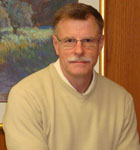April Fools’ Day is no laughing matter for Ken Linde. It was on April 1st, 10 years ago, that he assisted in the creation of a company that grew rapidly—too rapidly. Before the company knew what happened, it had generated $100 million in annual revenue, then, almost as quickly, it was declaring bankruptcy. In 2005, once again on April Fools’ Day, Linde started over, taking all of his experience with him to a new position as executive vice president and general manager of All-Power America, a power-tool and power-equipment manufacturer based in Chino, California. Though Linde was concerned the company might suffer the same fate as his previous endeavor, All-Power America today contracts with major retailers like Walmart and Sears—and there’s nothing funny about that.
1. Know Your Limitations
According to Linde, having a successful business relies on two things: knowing your limitations and understanding how consumers purchase goods. “No matter what a person is buying, they go through a sequence where they consider the item’s appearance, brand, price point, features, and benefits before purchasing that specific item or brand,” Linde says. “Customers make a value judgment, and a brand must justify the value judgment they make.” The issue, however, is that All-Power America doesn’t have the brand recognition of other power-tool manufacturers, but the company understands this limitation and actually uses it to its advantage. “The secret to our growth has been coming in with great product of equal value, but having a lower selling price,” Linde says.
2. Be Honest
“We’re not perfect,” Linde says. “Behind every business, there are people, and when there are people you have to account for human error. The difference between us and our competitors is that when we make mistakes, we acknowledge them, correct the situation, and move on.” The vice president says that the key to not losing customers is not talking down to them, and that means always being open and honest. Once, when All-Power America shipped out a few subpar generators, Linde personally called his client and told him to send them all back at no cost, simply because it was the honest thing to do.
3. Make Customer Service a Priority
Because All-Power America doesn’t have the brand recognition of its competitors, the company puts an immense amount of effort into reassuring customers that they can trust its smaller brand. Linde has an extensive customer-service network in place to offer creative solutions to customer complaints. In special cases, when the customer doesn’t seem pleased with any of the solutions offered, Linde requires that the customer is referred directly to him. “When a call ends up on my desk, I personally apologize for whatever problem the customer is having, and I do whatever I can reasonably do to make them happy,” Linde says. “Oftentimes clients can’t believe they’re speaking to the vice president of All-Power America. It lets them know we really care and it pays off. We’ve had customers go back to the Sears where they bought our product just to thank the manager for doing business with us.”
4. Understand Your Place
According to Linde, one of the biggest challenges companies face is understanding where they fit in the mind of the consumer. Having a realistic understanding of your place requires some maturity, and with 40 years of experience under his belt, Linde expertly identifies All-Power America’s strengths and weaknesses and creates strategies that improve the company. “You have to know who you are as a company and what you do well or what needs improvement,” Linde says. “You wouldn’t believe the number of companies who keep pushing strategies or initiatives that have proven to be unsuccessful. Repeatedly doing something that doesn’t work and hoping for a different result is literally a sign of insanity. We figure out what works and we stick to it.”

